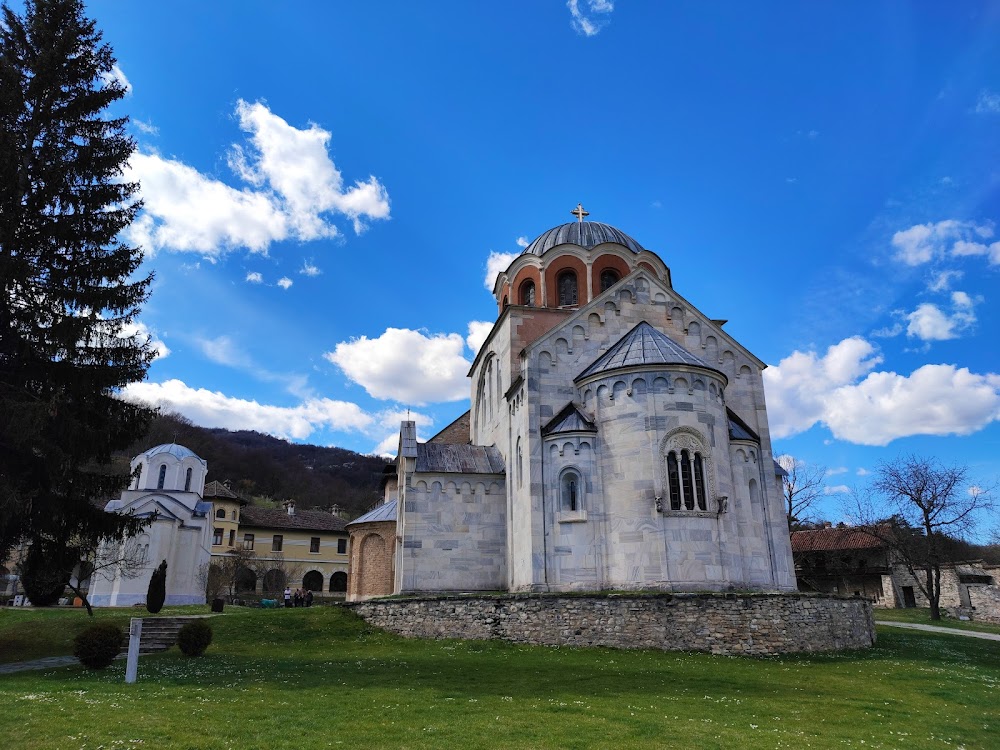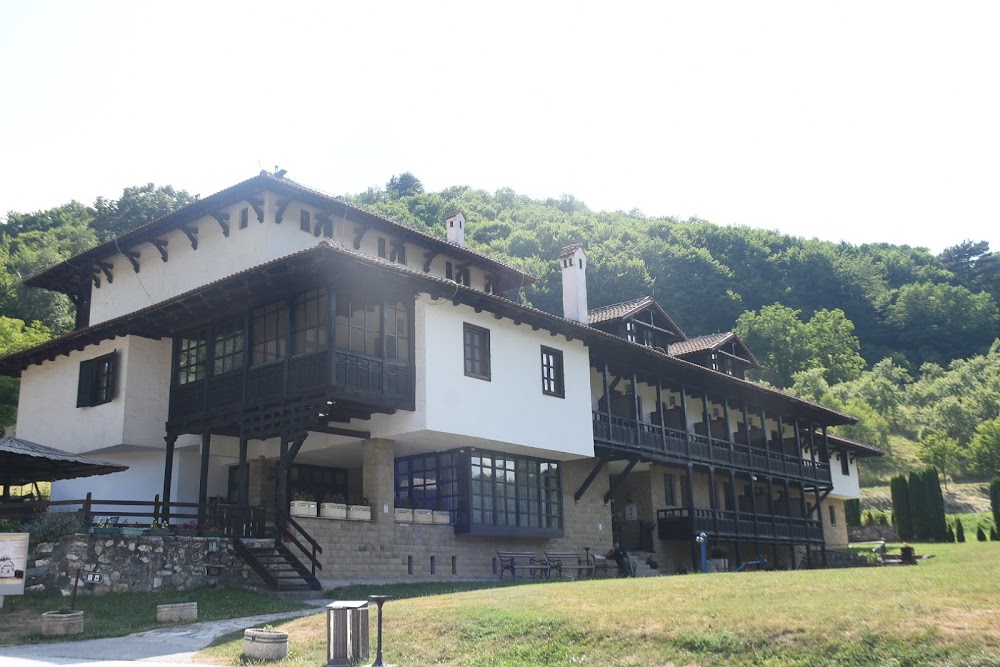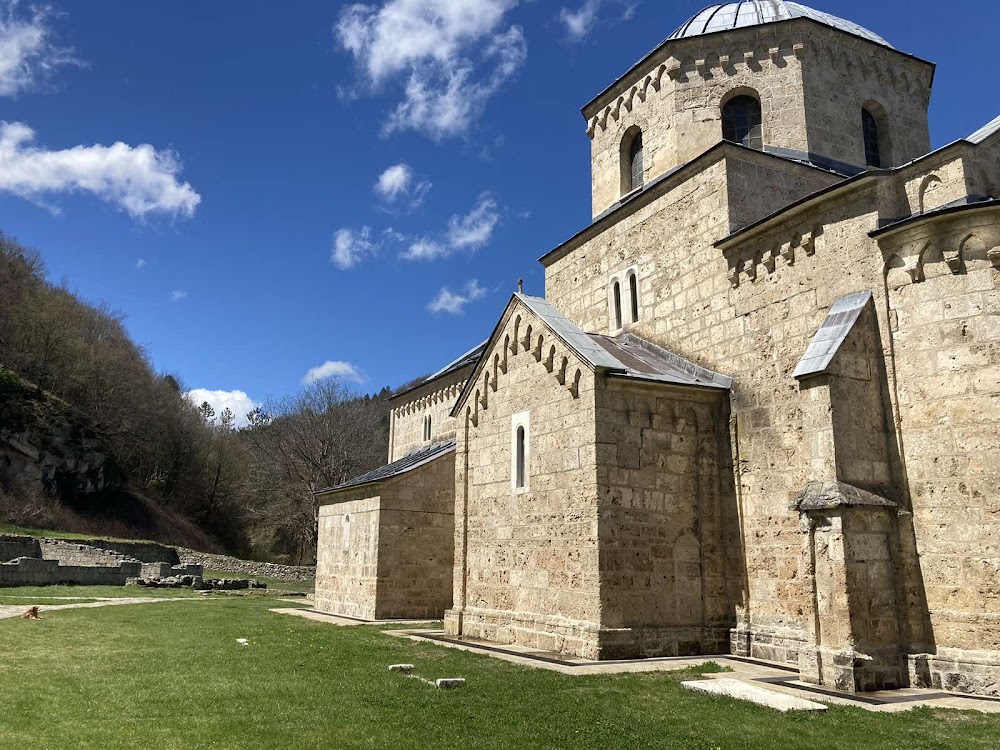Studenica Monastery (Манастир Студеница)
Overview
**Studenica Monastery**
Nestled in the Raška District of Serbia, Studenica Monastery is a magnificent embodiment of medieval architecture and a vital center of Serbian spirituality and culture. Founded in 1183 by Stefan Nemanja, the Grand Prince of Serbia—who later embraced monastic life as Saint Simeon—the monastery's origins are steeped in history and devotion.
The **Church of the Virgin**, the monastery's main church, is particularly notable for its stunning white marble façade and the harmonious blend of Romanesque and Byzantine architectural styles. This unique fusion reflects the cultural exchanges of the late 12th and early 13th centuries, showcasing the rich historical tapestry of the region. The construction was expertly led by Greek master builders, who artfully incorporated both local and Byzantine influences into the design.
Inside the **Church of the Virgin**, visitors are greeted by some of the most significant frescoes of medieval Serbian art. Painted in the early 13th century, these captivating murals depict scenes from the lives of Christ, the Virgin Mary, and various saints. Renowned for their vibrant colors and intricate details, these frescoes have remarkably withstood the test of time, offering a glimpse into the artistic prowess of the era.
The monastery complex also features the **Church of the King**, constructed in the early 14th century by King Milutin, a descendant of Stefan Nemanja. This church stands as another testament to the monastery's historical significance and architectural elegance, with frescoes that exemplify the beauty of Byzantine art from that period.
The surrounding walls and fortifications of the monastery were strategically designed to protect it from the invasions and conflicts that plagued the region during medieval times. These sturdy defenses offer insight into the turbulent history that the monastery has endured over the centuries.
Studenica Monastery was not only a place of worship but also a crucial hub for the cultural and religious life of medieval Serbia. It played an essential role in the transcription of manuscripts and the production of religious literature, with the monks at Studenica being instrumental in preserving and spreading Orthodox Christianity and Serbian culture throughout the region.
Throughout its history, the monastery has faced numerous challenges, including destruction and damage during the Ottoman period. However, the unwavering dedication of the Serbian people has led to its consistent restoration and preservation, underscoring its importance as a national heritage site.
Today, Studenica Monastery remains a living example of medieval monastic life and continues to thrive as an active religious community. It has also become a significant tourist attraction, drawing visitors from around the globe who come to admire its architectural beauty and rich historical narrative.
In recognition of its cultural and historical significance, Studenica Monastery was designated a **UNESCO World Heritage Site** in 1986. This prestigious acknowledgment has played a crucial role in ensuring the protection and preservation of the monastery for future generations.
Ultimately, Studenica Monastery stands as a powerful testament to Serbia's rich cultural heritage and the enduring legacy of its medieval past. With its captivating blend of architectural styles, stunning frescoes, and profound historical importance, it is undoubtedly one of the most remarkable sites in Serbia and an integral part of the nation's identity.







